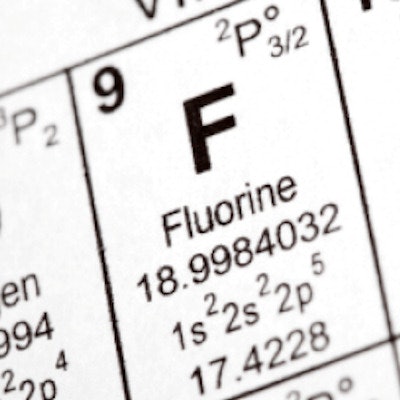
Recent research is scant on the dental health effects of water fluoridation in the U.S., despite the public health importance of this intervention. Therefore, the researchers of a new study investigated the association between community water fluoridation and dental caries occurrence in U.S. children.
They combined data on water fluoridation by county with dental exam results from the National Health and Nutrition Examination Survey (NHANES). Their analysis found that children who lived in counties with greater access to community water fluoridation experienced fewer caries. Their research was published on June 14 in the Journal of Dental Research.
"These findings confirm a substantial caries-preventive benefit of community water fluoridation for U.S. children and that the benefit is most pronounced in primary teeth," the study authors wrote.
They were led by Gary Slade, BDSc, PhD, DDPH, the program director of oral epidemiology and a distinguished professor of dental ecology at the University of North Carolina at Chapel Hill School of Dentistry.
Community benefit
Few studies have been published over the past three decades on the oral health effects of community water fluoridation in the U.S., despite fluoridation being a significant public health achievement for caries prevention, the authors noted. At the same time, the U.S. Preventive Services Task Force supports community water fluoridation, and a Healthy People 2020 initiative goal seeks to expand its coverage.
To learn more, researchers conducted a cross-sectional study using data from individuals who were ages 2 through 17 in the 1999 to 2004 and 2011 to 2014 cycles of the NHANES, which encompasses a stratified random sample of the U.S. population.
“These findings confirm a substantial benefit to community water fluoridation in preventing caries in U.S. children and that the benefit is most pronounced in primary teeth.”
Dental examiners had recorded decayed or filled primary tooth surfaces (DFS) in participants ages 2 through 8, and decayed, missing, or filled permanent tooth surfaces (DMFS) in those ages 6 through 17. NHANES researchers also obtained information for each child on their age, sex, race or ethnicity, and time since last dental visit, as well as the education of the head of their household.
The study researcher also used data from the Water Fluoridation Reporting System, which is maintained by the U.S. Centers for Disease Control and Prevention, about community water fluoridation for 3,136 counties in all 50 states and Washington, DC. This included information on the number of people served by public water systems containing fluoride in the optimal concentration range (0.7 to 1.2 parts per million or higher) and annual county population estimates.
The investigators received additional information from the California Department of Public Health, from Rhode Island's state water system report on fluoridation, and regarding whether study participants lived in urban or rural locations. Ultimately, their study included data on the primary dentition in 6,633 children ages 2 to 8 and the permanent dentition in 11,971 children ages 6 to 17.
While only 28.8% of counties had water at least 75% fluoridated, 52.4% of the U.S. population and 74.5% of the 207.1 million U.S. residents served by fluoridated water lived in those counties, the authors reported. They found that caries experience was 30% lower in primary dentition in children living in counties with at least 75% of water fluoridated compared with those in counties with lower water fluoridation percentages (mean DFS 3.3 versus 4.6). In permanent teeth (mean DMFS 2.2 versus 1.9), this reduction was also statistically significant.
While the study's results in individuals are small to negligible, they are more meaningful when considered for groups, the authors noted.
"Effect estimates from this study translate as 13 fewer primary tooth surfaces and 3 fewer permanent tooth surfaces developing caries for every 10 children who gain access to community water fluoridation," they wrote.
Misclassification complication
Drawbacks of the study include the misclassification of some participants as being exposed to fluoridated water even though they hadn't been if they lived in a county where at least 75% of the population had fluoridated water, as well as of participants served by fluoridated water but living in a county in which that was the case for fewer than 75% of the population. Not drinking tap water, which is reported by 15% of the U.S. population, led to further misclassification of some study participants.
The authors noted that a need for sound scientific evidence that backs community water fluoridation and also for the data to be communicated effectively to audiences that that may have limited health literacy.
"The current findings are consistent with earlier studies that established the scientific consensus that community water fluoridation is effective in preventing dental caries," the authors concluded. "They provide a valuable update of the evidence needed to support fluoridation as a core public health intervention promoting oral health."



















